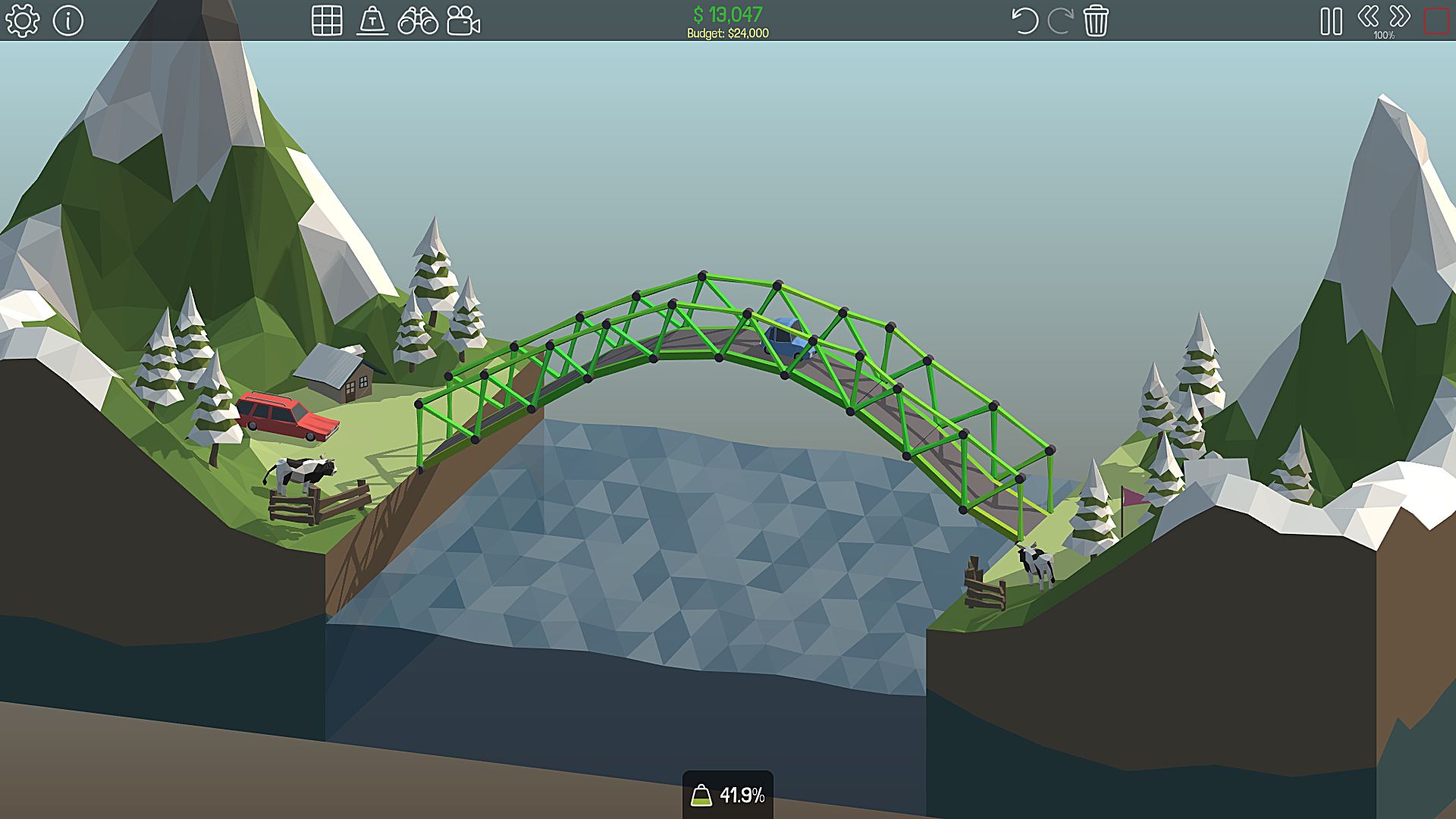

For now, I hope I have shown you just why managing risk in play spaces is different to managing risk in factories – and also hope I have persuaded you of some of the insights to be gained from wobbly bridges. I plan to explore standards in more detail in my next post. For us, this means rethinking the role and use of playground equipment standards.
#POLY BRIDGE 2 WIBBLY WOBBLY PROFESSIONAL#
Our goal is to create more space for professional judgements about what balance means – what it looks like – in different situations and circumstances. More recently David, Bernard and I have teamed up with Harry Harbottle, a playground industry insider who has served his time on playground equipment standards committees and is co-author of a handy guide to the European Standard. (A new edition is due out in the coming months.) In 2008 the three of us co-wrote Managing Risk in Play Provision: Implementation Guide, which introduced risk benefit assessment to the play safety world.

The move was also, in my view, part of a wider reaction to concerns about the over-protection of children.ĭavid and I have since become close collaborators, along with Bernard Spiegal of PLAYLINK. That it did so was thanks in part to David’s research, which showed that playgrounds had for decades been comparatively safe places for children to play. In 2002 the Play Safety Forum took the bold step of making balance – not risk reduction – the heart of good risk management, in its groundbreaking position statement Managing Risk in Play Provision. At the same time, I was trying to tackle the problem of the ramping-up of playground safety, in my role as convener of the Play Safety Forum. When I first met David around 2000, he was carrying out a study into playground accidents, funded by the Health and Safety Executive. It was the risk management academic Prof David Ball who showed me the value of thinking about wobbly bridges. To put it another way, some risks have inherent benefits. What the wobbly bridge reveals is that in a playground, unlike in a factory or workplace, the presence of some types of hazards – sources of harm – is a good thing.

A wobbly bridge presents a challenge to children: are they steady enough on their feet – and brave enough – to cross it?” Yet in a play context, a wobbly bridge has inherent benefits, even though it may lead to more accidents than a rigid bridge. If there were such a bridge, it would probably be flagged up in a risk assessment as needing remedial action. “In a factory or workplace, there would be no good reason to build a bridge that wobbles. I discuss wobbly bridges in Play and Risk, an information sheet I wrote that has just been published by Play Wales. One way to grasp this difference is to think about a wobbly bridge. The reason for this is down to a fundamental difference in the nature of the task. In fact, managing risk in a playground is much more complex than in a factory or a workplace. Yet the answer is anything but (and even the question is not as simple as it looks). “How can we make our playground safe?” It seems a simple enough question.


 0 kommentar(er)
0 kommentar(er)
